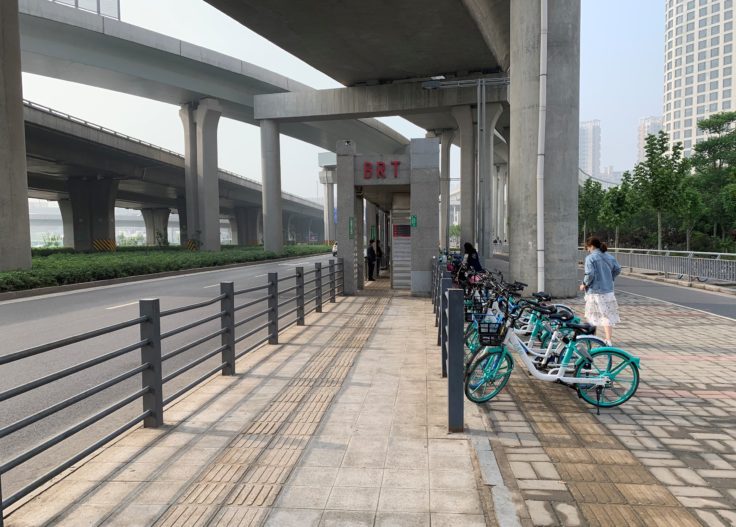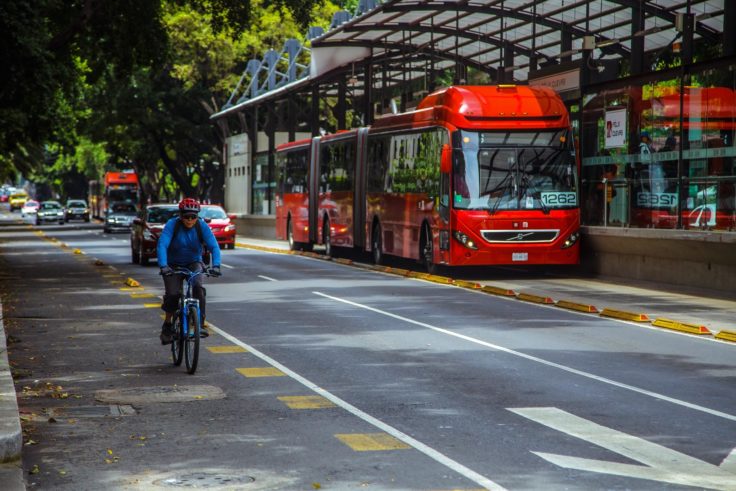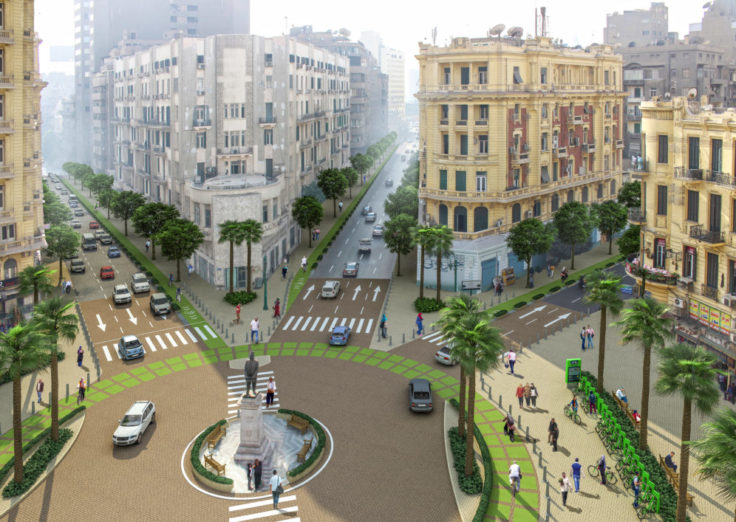August 25, 2022
Better Together: Rapid Transit and Cycling Networks
Transportation is all about options. Integrated transportation systems that make mobility more accessible, more efficient, and more equitable are crucial to improving quality-of-life everywhere. Two critical components of a multi-modal transportation network are rapid transit systems and cycling infrastructure that connect with one another.
With the impacts of the COVID-19 pandemic, cities around the world have seen challenges to the development and growth of their rapid transit systems. Many people turned to cycling to avoid crowded commutes. Many cities quickly built pop-up cycle lanes, bikeshare stations, and infrastructure to accommodate the shift. Now, more than two years into the pandemic, urban residents are beginning to return to their daily commutes, mandating cities to think more strategically about integrating cycling infrastructure with existing and future rapid transit lines. This integration is especially important considering that more than 60 cities worldwide have debuted new rapid transit routes in 2021 alone.

Just last year, 12 new Bus Rapid Transit (BRT), 16 Light Rail Transit (LRT), and 76 Metro lines were opened globally, each of which has been added into ITDP’s Rapid Transit Database (RTDB). Launched in 2021, the Rapid Transit Database is a publicly available, interactive online tool that allows users to track rapid transit corridors around the world. Users are able to compare locations and view data dating back to 1985 focused on Metro, LRT, and BRT lines worldwide. The RTDB offers a clearer perspective on rapid transit for planners and policymakers alike when evaluating the state of rapid transit networks in their regions as it relates to population and length.
The first public global database of its kind, the RTDB uses a metric developed by ITDP called Rapid Transit to Resident (RTR), which measures the effectiveness of a rapid transit system by comparing its size relative to the population it serves. For example, a city like Basel, Switzerland – which only has 57.2 kilometers of rapid transit lines – has a high RTR of 102.3 kilometers per million urban residents because the population is also relatively small in size. Compare this to a larger city, like Santiago, Chile. Santiago has over 200 kilometers of rapid transit lines, but an RTR of only 30.9 kilometers per million urban residents because the population is significantly larger. By taking into account the population of the service area, RTR is a helpful metric for understanding how effectively cities are investing in their rapid transit systems beyond just the length of the network.

In addition to RTR, a key indicator of the success of a rapid transit system is the way in which it integrates with the other mobility networks, especially cycling. Around the world, numerous cities and regional governments have turned their focus to developing more cohesive and comprehensive rapid transit strategies that also highlight cycling connectivity.
Three cities in Mexico – Monterrey, Mexico City, and Guadalajara – serve as prime examples of places taking integrated approaches to rapid transit. Monterrey, in recent years, has been increasing investments in sustainable and active mobility that supports greater access to both cycling and rapid transit. Mexico City made headlines in 2020 with the rapid adoption of temporary cycling lanes and, in 2021, Mayor Claudia Sheinbaum announced that many of those lanes would be made permanent, particularly ones situated near BRT and rapid transit stations. And in Guadalajara, the immense public support for cycling can be seen at the municipal level as the city itself operates the second largest bikeshare system (Mibici) in Mexico. Between the three cities, nearly 35 kilometers of new BRT and LRT lines were opened in 2021, with another 95 kilometers of BRT lines expected in 2022.
China is often recognized for being a global leader in rapid transit innovation, opening a tremendous number (over 1,200 kilometers) of new BRT, LRT, and Metro lines in 2021. The country has also been working on integrating bikeshare programs into their broader transit network for years. After recent backlash to dockless bikeshare programs in some Chinese cities, the pandemic led to a boom in Chinese citizens embracing cycling again in recent years. In the city of Hangzhou, there are thousands of bikeshare docking stations as well as personal bike parking at every stop along four of the city’s key Metro lines. These lines were also expanded in 2021 to facilitate more cycling trips between public transit stations and final destinations.

In the Middle East, there have also been notable multi-modal infrastructure investments in the past year. The city of Sharm El-Sheikh, Egypt is preparing to host the 2022 United Nations Climate Change Conference (COP27) and has been making a push towards sustainable mobility with new cycling-friendly and transit electrification initiatives. Amman, Jordan, opened the region’s first BRT line in 2021. Cairo, Egypt and Riyadh, Saudi Arabia are expecting to open their first lines by the end of 2022. Cairo is also currently working on implementing its first bikeshare program, expected to be operational in 2022, in addition to 15 kilometers of protected bike lanes that will connect with metro stations and new BRT stops to facilitate accessible, multi-modal trips.
The growth in new rapid transit lines are just one component of the commitment many cities have made to more sustainable, inclusive transport networks that bridge public transit, cycling, and walking. As cities around the world continue to navigate the impacts of the pandemic, the boom in cycling — coupled with the unfortunate volatility in public transit ridership — demonstrates a crucial need to reimagine the way in which our transport and infrastructure systems work together and complement one another. This requires focusing on the development of robust cycling and pedestrian infrastructure that also integrates strategically with transit lines so that all commutes can be made safer, more accessible, and more efficient.
Have questions about ITDP’s Rapid Transit Database? Reach out to data@itdp.org.
